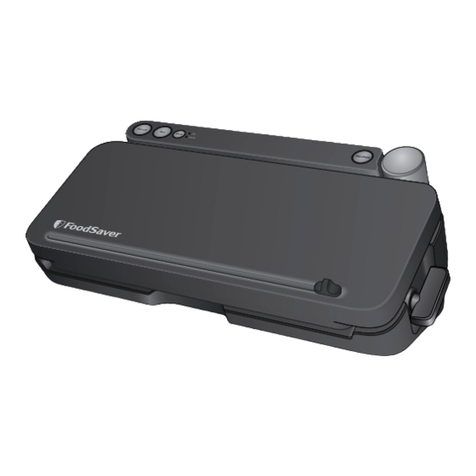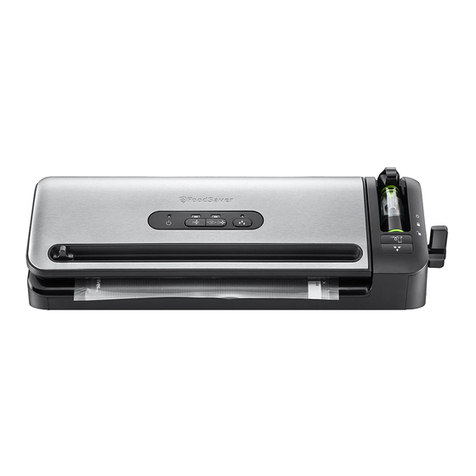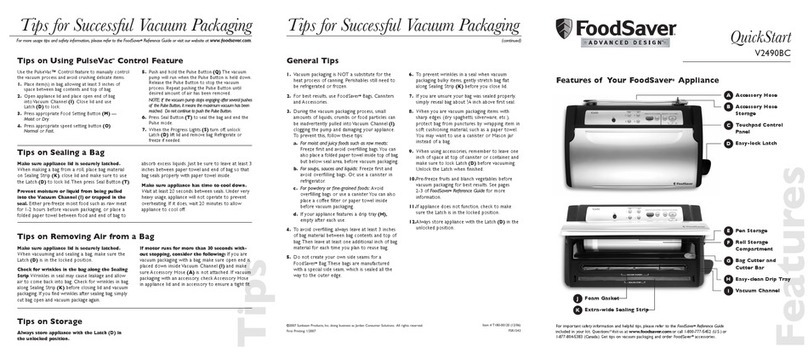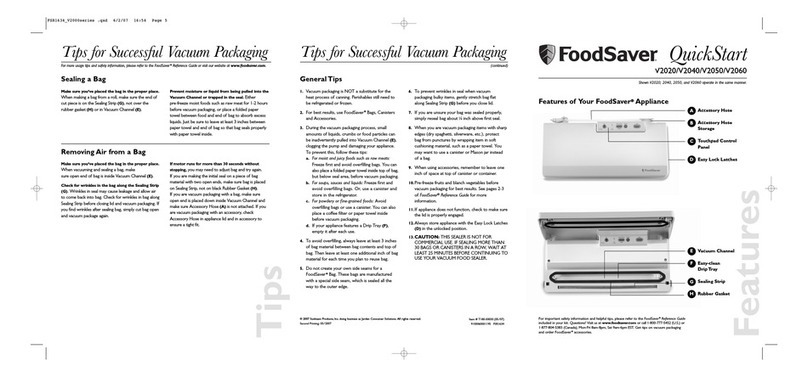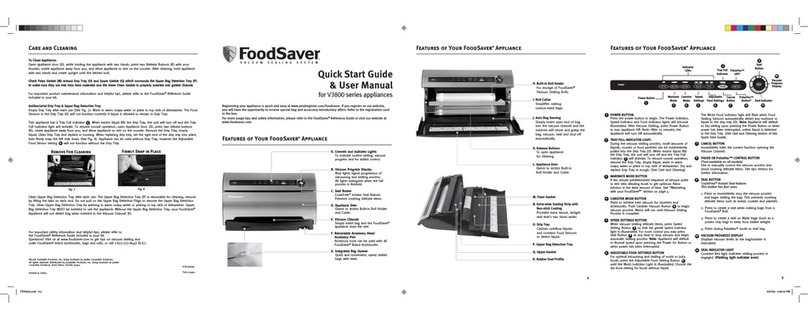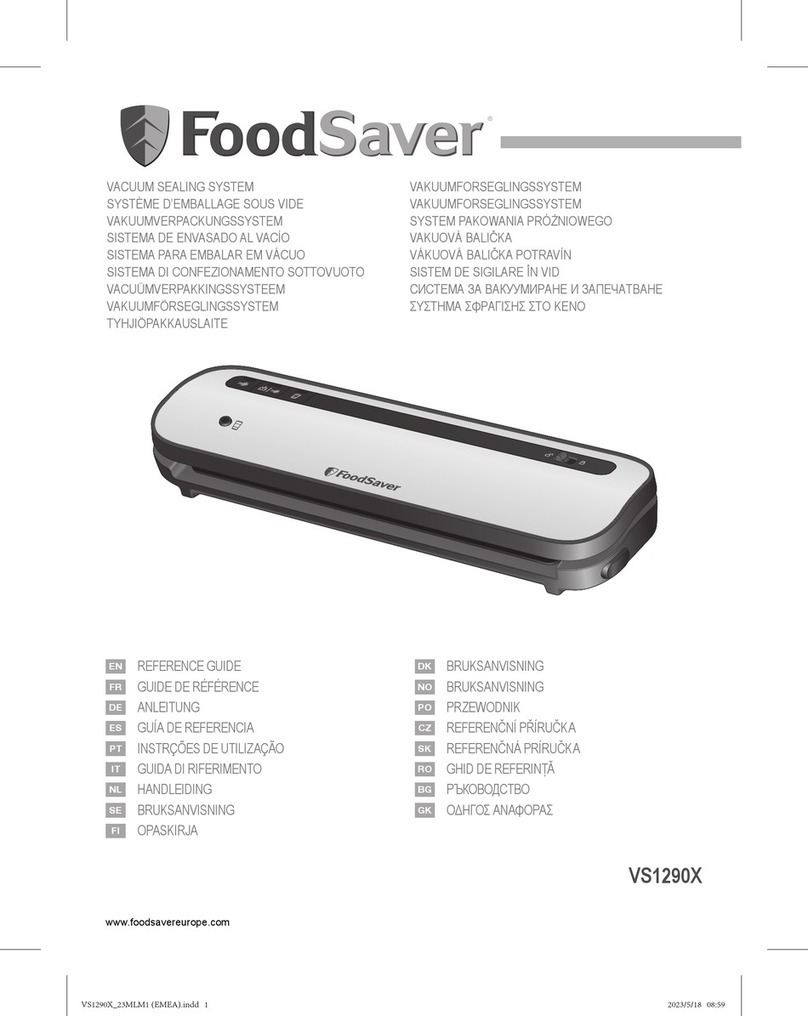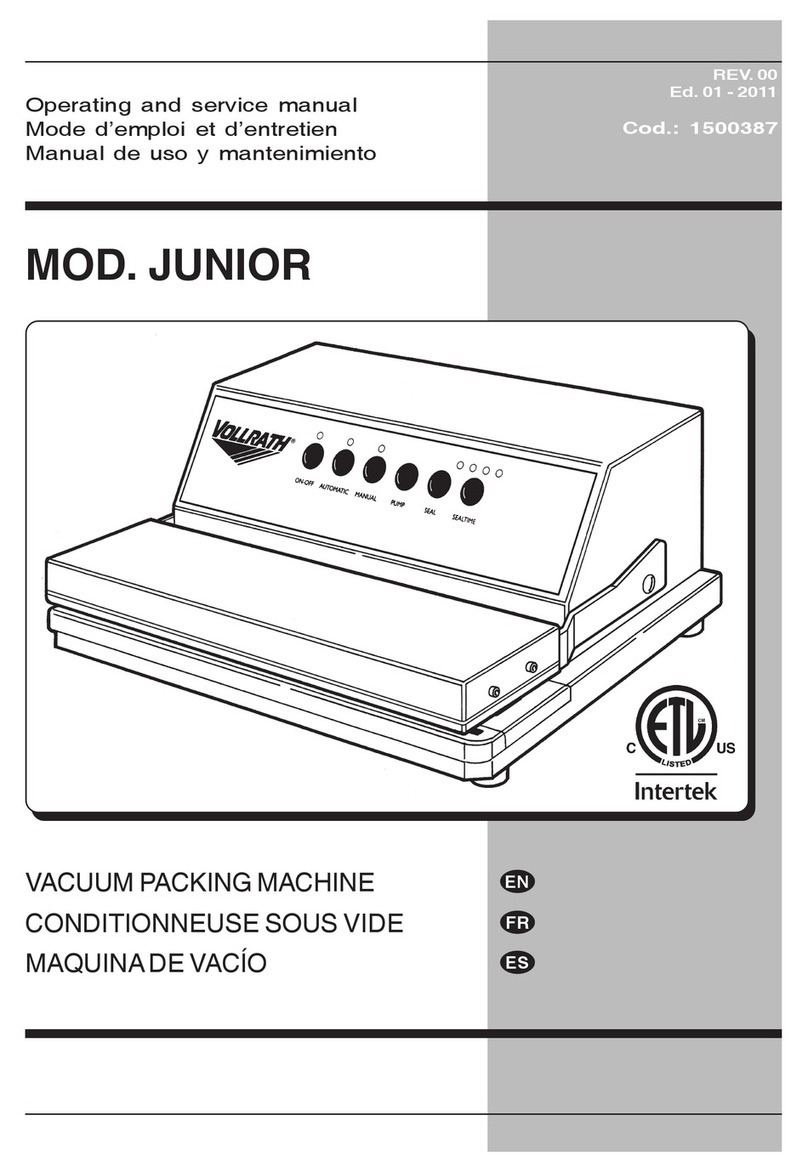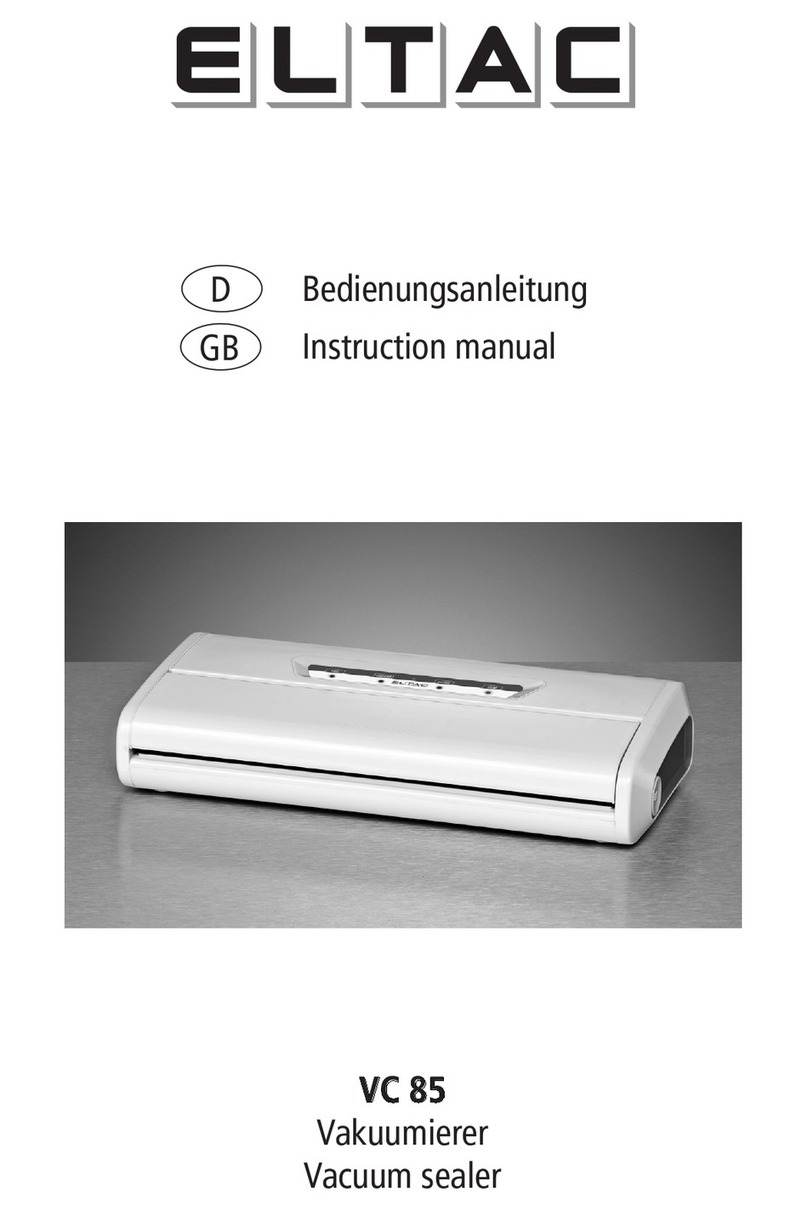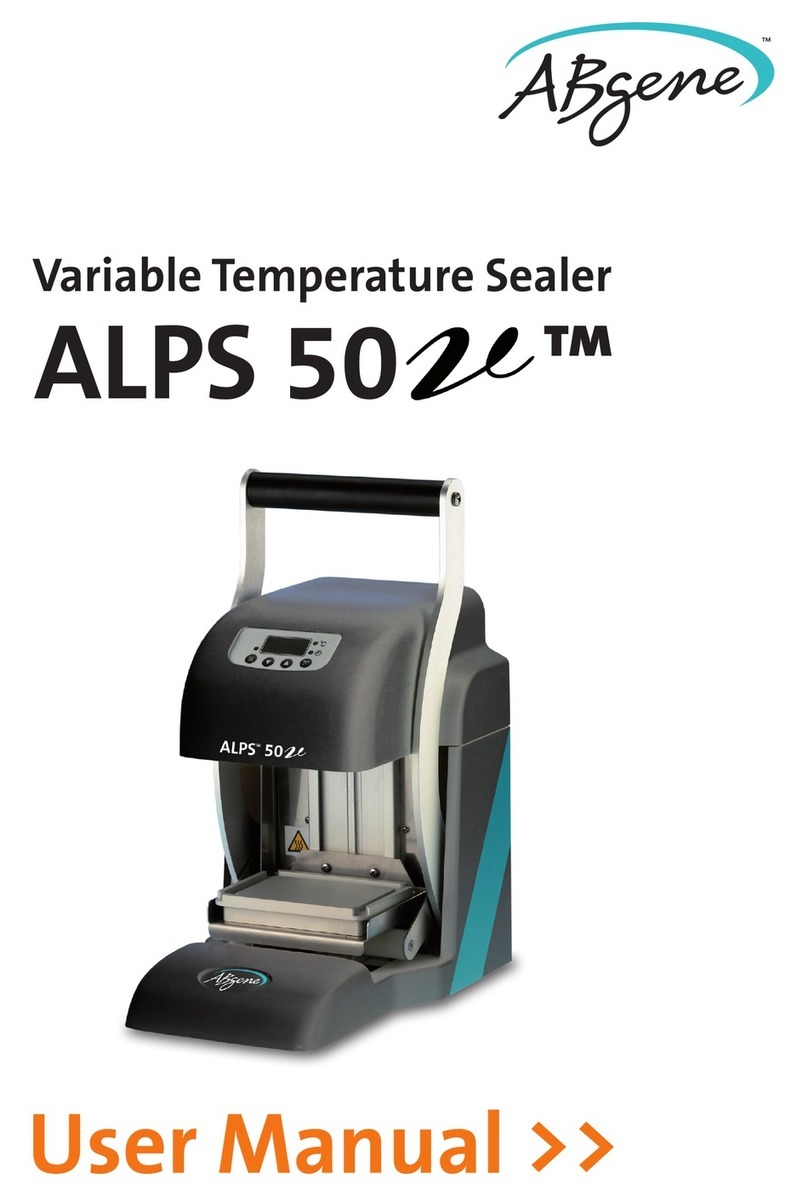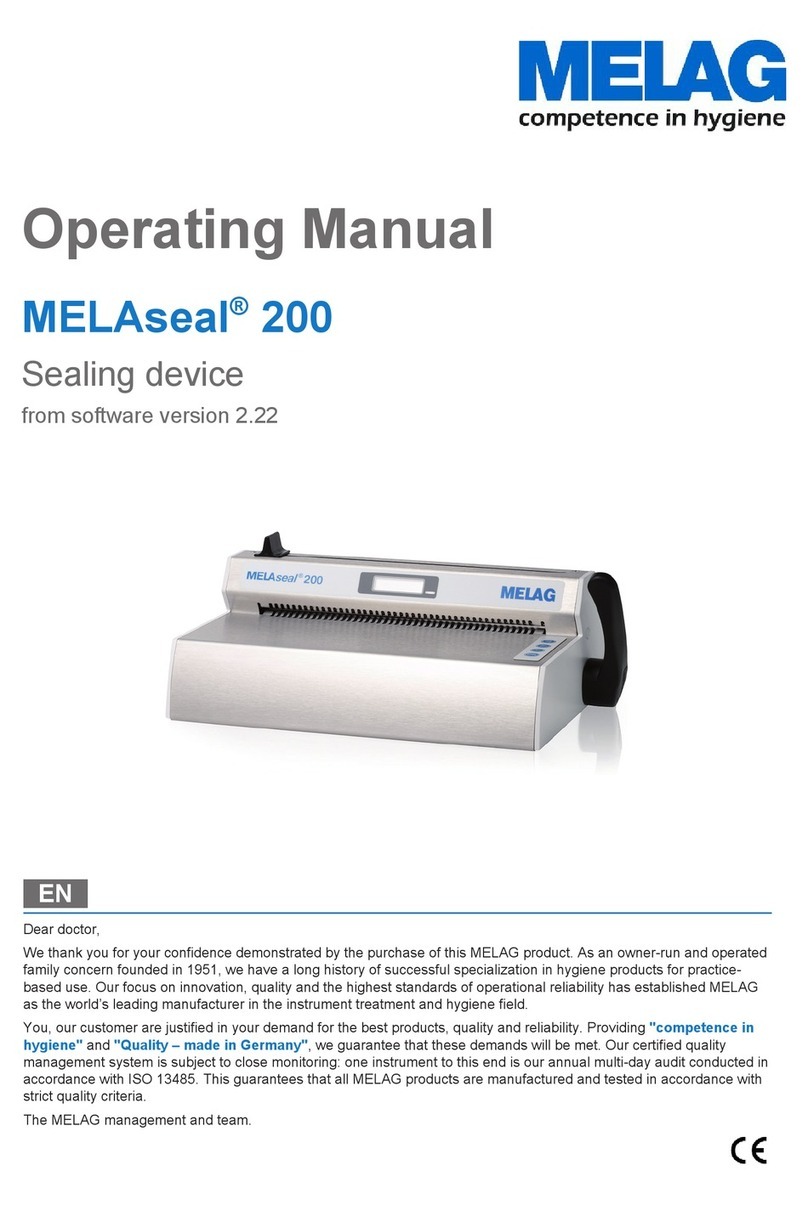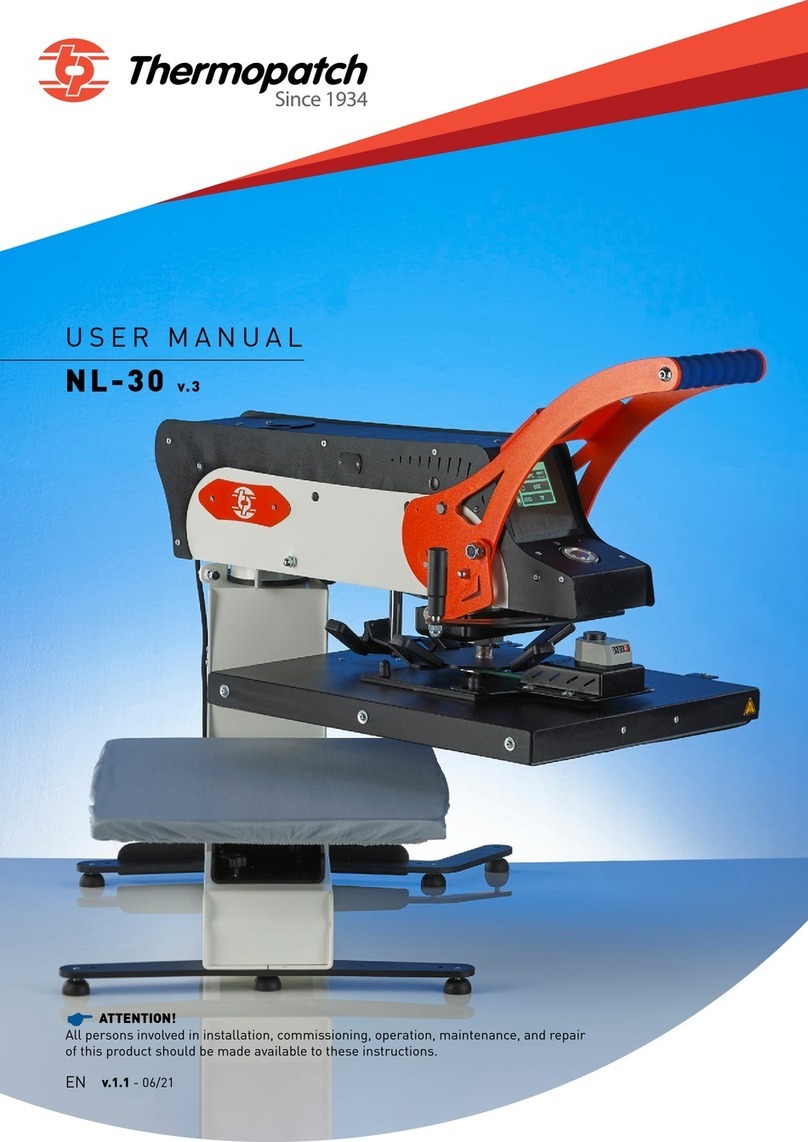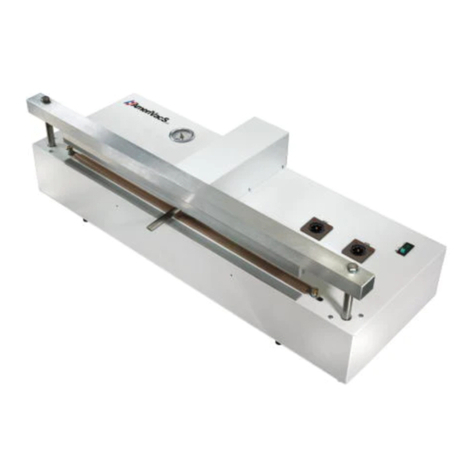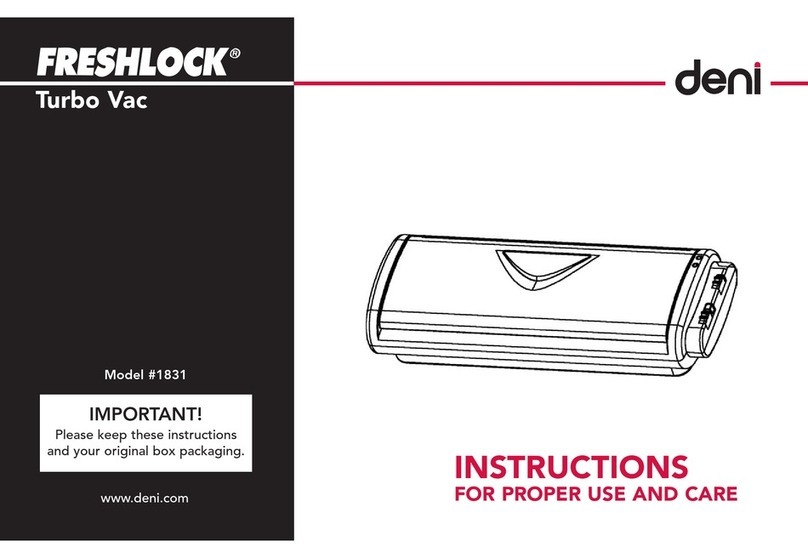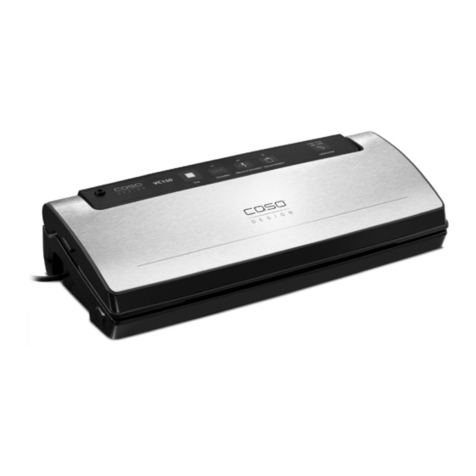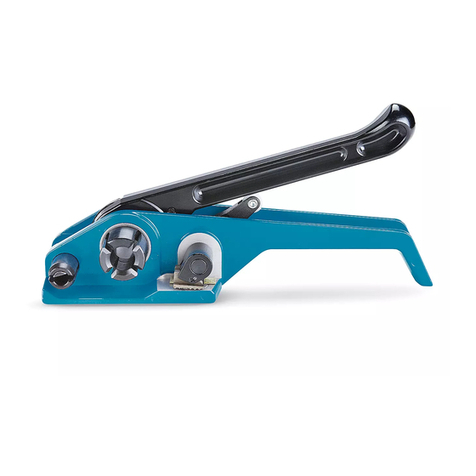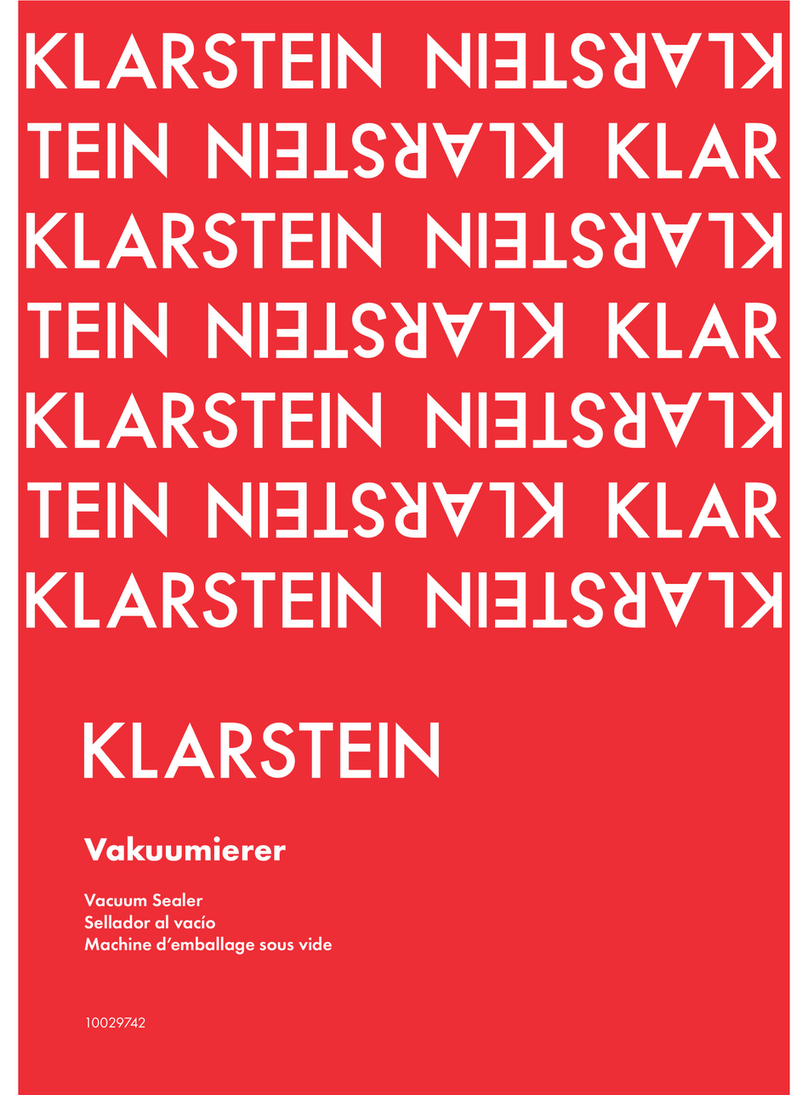
www.foodsaver.co.uk
8
Storage Guide, Hints and Tips
Vacuum Packaging and Food Safety
The vacuum packaging process extends the life of foods
by removing most of the air from the sealed container,
thereby reducing oxidation, which affects nutritional value,
flavour and overall quality. Removing air can also inhibit
growth of microorganisms, which can cause problems
under certain conditions:
To preserve foods safely, it is critical that you maintain low
temperatures. You can significantly reduce the growth of
microorganisms at temperatures of 4°C or below.
Freezing at -17°C does not kill microorganisms, but stops
them from growing. For long-term storage, always freeze
perishable foods that have been vacuum packaged, and
keep refrigerated after thawing.
It is important to note that vacuum packaging is NOT
a substitute for canning and it cannot reverse the
deterioration of foods. It can only slow down the changes
in quality. It is difficult to predict how long foods will retain
their top-quality flavour, appearance or texture because it
depends on age and condition of the food on the day it
was vacuum packaged.
Important: Vacuum packaging is NOT a substitute
for refrigeration or freezing. Any perishable foods that
require refrigeration must still be refrigerated or frozen
after vacuum packaging. To avoid possible illness, do
not reuse bags after storing raw meats, raw fish or greasy
foods. Do not reuse bags that have been microwaved or
simmered.
Thawing and Reheating
Vacuum Packaged Foods
Always thaw foods in a refrigerator or a
microwave oven — do not thaw perishable
foods at room temperature.
Foods inside bag can be defrosted but not
reheated in a microwave oven. When defrosting foods
in the microwave in FoodSaver™bags make sure not to
exceed maximum power of 180 watts (defrost setting),
maximum time of 2 minutes and maximum temperature
of 70°C (158°F). You can also reheat foods in FoodSaver™
bags by placing them in water at a low simmer below
75°C (170°F). Follow any specific instructions that come
with the FoodSaver™ specialty bags.
Preparation Guidelines
Meat and Fish
For best results, pre-freeze meat and fish for 1-2 hours
before vacuum sealing in a FoodSaver®bag. This helps
retain the juice and shape, and guarantees a better seal. If
it’s not possible to pre-freeze, place a folded paper towel
between meat or fish and top of bag, but below seal area.
Leave a paper towel in bag to absorb excess moisture and
juices during the vacuum sealing process.
Note: Beef may appear darker after vacuum sealing
due to the removal of oxygen. This is not an indication of
spoilage.
Hard Cheeses
To keep cheese fresh, vacuum seal it after
each use. Make your FoodSaver®bag extra
long, allowing 25mm of bag material for
each time you plan to open and reseal, in
addition to the 75mm room you normally leave between
contents and seal.
Simply cut sealed edge and remove cheese. When you’re
ready to reseal the cheese, just drop it in bag and reseal.
Important: Due to the risk of anaerobic bacteria, soft
cheeses should never be vacuum sealed.
Vegetables
Vegetables need to be blanched before
vacuum sealing. This process stops the
enzyme action that could lead to loss of
flavour, colour and texture.
To blanch vegetables, place them in boiling water or
in the microwave until they are cooked, but still crisp.
Blanching times range from 1 to 2 minutes for leafy
greens and peas; 3 to 4 minutes for snap peas, sliced
courgette or broccoli; 5 minutes for carrots; and 7 to 11
minutes for corn on the cob. After blanching, immerse
vegetables in cold water to stop the cooking process.
Finally, dry vegetables on a towel before vacuum sealing.
Note: All vegetables (including broccoli, Brussels
sprouts, cabbage, cauliflower, kale, turnips) naturally emit
gases during storage. Therefore, after blanching, they
must be stored in freezer only.
When freezing vegetables, it is best to pre-freeze them
for 1–2 hours or until solidly frozen. To freeze vegetables
in individual servings, first place on a baking sheet and
spread them out so they are not touching. This prevents
them from freezing together in a block. Once they are
frozen, remove from baking sheet and vacuum seal
vegetables in a FoodSaver®bag. After they have been
vacuum sealed, return them to the freezer.

